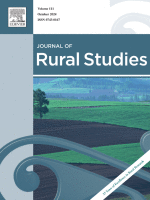Home Urban Planning Page 3
Urban Planning
- Research
This research aims to build a better understanding also of government, industry and not-for-profit roles in shaping industry structure and driving new urban forms, and improving the adoption of liveable and accessible design outcomes.
- Research
This chapter reports on the application of urban transition frameworks and processes in the development and implementation of a new planning model for regenerating and re-urbanising Australia’s low-density, car-dependent greyfield suburbs: the established, ageing, but well-located middle-ring suburbs built in the post-war era on larger lots.
- Research
This study examines urban policymakers’ perceptions about causal relationships in the urban system as revealed in urban planning reports.
- Research
This article examines the impact of neoliberal political-economic orientations on urban planning policies through a case study of Ireland’s Strategic Housing Development fast-track planning scheme.
- Research
This submission canvasses the crisis in housing availability and affordability for essential workers in New South Wales.
- Research
Through the lens of mobilities, we outline useful lessons and insights from this example of a backpacker visa, which are relevant for future research and debates around rural livelihoods, labour migration, and farming communities.
- Research
This research examines the relationship of First Nations peoples in Australia to urban policy, and is designed to centre First Nations sovereignty, authority, knowledge, governance and agency as the starting point toward a more responsible relationship.
- Research
This report draws lessons from recent crises to provide a strategic framework for urban policymakers to bolster resilience against future shocks, including by promoting sustainability and driving inclusive growth.








